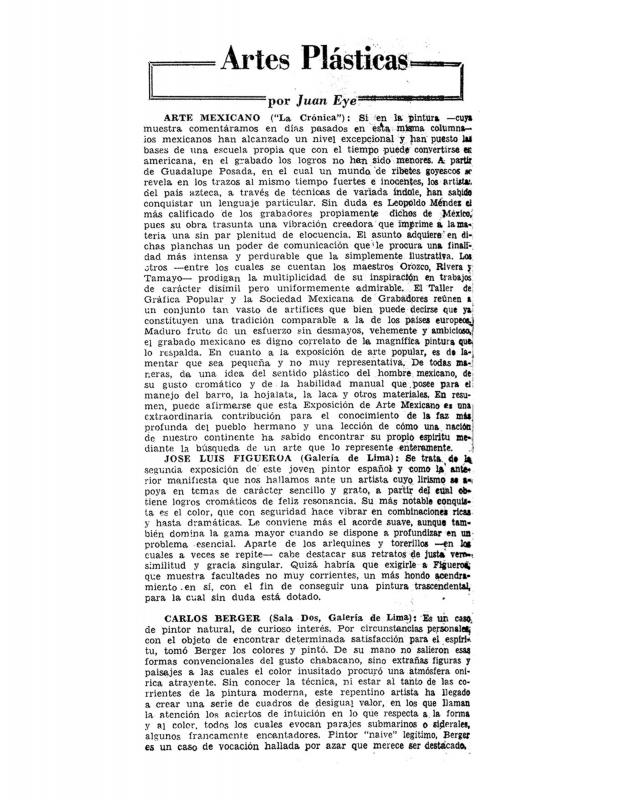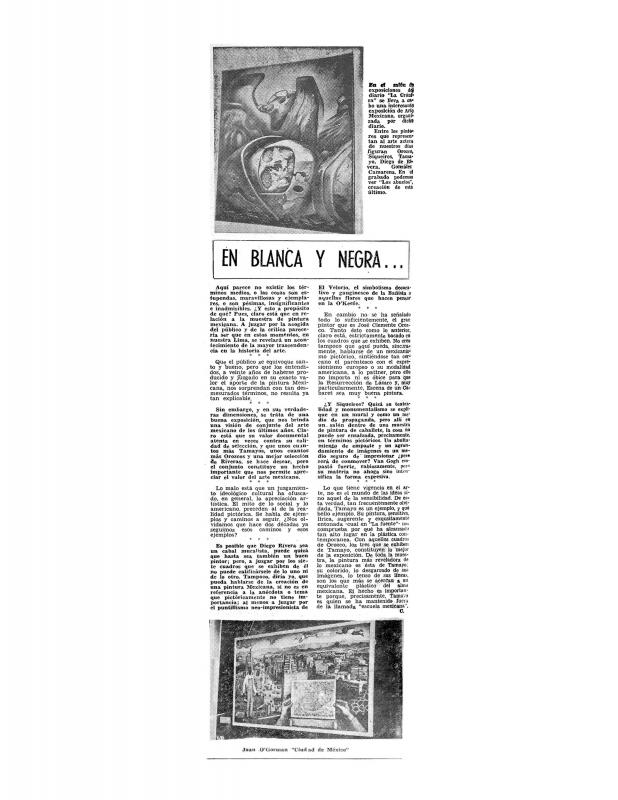The final of two articles written by essayist Alejandro Lora Risco on the potential for an American cultural expression based on the works of Rufino Tamayo shown in Lima as part of the Mexican art exhibition organized by La Crónica newspaper.
Organized and exhibited in Lima (June 1954) by La Crónica newspaper, the Mexican art exhibition brought the modern art of that country to the local scene. Although it was not the first occasion that works from this country where shown, the magnitude of this show went beyond any previous exhibitions. Its importance is unquestionable within a context polarized by the debate on abstract art; controversy had erupted the month before, due to an exhibition of contemporary Italian painters.That made the discussion of the works from Mexico an even more significant one, accentuated by the frequent parallel drawn between that country and Peru. One of the noteworthy critics of abstract art, writer Sebastián Salazar Bondy (1924-65), devoted two emphatic articles to the value of the Mexican exhibition, proposing it as an example of “national” art that was at the same contemporary. [See in the ICAA digitalarchive, “Artes Plásticas (7 de junio de 1954) (doc. no. 1137991) and “Artes Plásticas (9 de junio de 1954)” (doc. no. 1138006), by Bondy]. In response, the principal ideologue of local modernism, architect Luis Miró Quesada Garland (1914-94), rejected the existence of a Mexican “school” by highlighting its debt to European modernism. [See“En blanca y negra...,” by Garland (doc. no. 1138030)]. Nevertheless, the more systematic reflection was made by one of the exhibition’s organizers, essay writer and painter Alejandro Lora Risco (1918-2001); he upheld Rufino Tamayo (1899-1991) as an example of “mestizo” artistic expression. For [Lora Risco] [Tamayo’s] worth arose from his ability to strip the “American elements” from any program or anecdote, thus identifying the essence of universality and Western culture. [See the articles by Alejandro Lora Risco: “Nuestros artistas presentes…” (doc. no. 1150959); “Hacia la indigenización de nuestro concepto del mundo” (doc. no. 1151010)].





